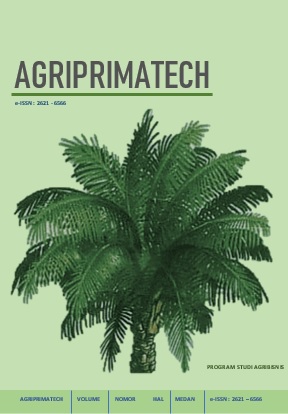Analisis Keberhasilan Usahatani Kelapa Sawit Rakyat Studi Kasus di Desa Sungai Tapah Provinsi Riau
##plugins.themes.academic_pro.article.main##
Abstract
Sungai Tapah Village in Tanjung Medan District, Rokan Hilir Regency, Riau Province is an area where the majority of residents rely on income from oil palm cultivation. Each oil palm farmer has a plantation with an average size ranging from 1 to 6 hectares This research seeks to delineate the attributes of farmers, quantify revenue and profits, and evaluate the viability of smallholder oil palm cultivation. The research was carried out during a three-month period, from March to May 2023, involving 71 oil palm farmers as the sample. Data analysis was performed using feasibility and profitability methods with calculations of R/C ratio and B/C ratio, while BEP was used to determine the minimum production quantity needed in the oil palm production process. The average age of responders was 36-40, according to the survey, the majority have a junior high school education, with an average farming experience of 16 to 20 years, and an average land area of 3 hectares. Production costs amount to Rp 2,565,215,028 per year, with farmer revenue totaling Rp 6,752,170,870 per year, and income reaching Rp 4,205,840,842 per year. The R/C Ratio is 2.65, and the B/C Ratio is 1.65.
##plugins.themes.academic_pro.article.details##

This work is licensed under a Creative Commons Attribution-ShareAlike 4.0 International License.

